| Your browser is not supported. | ||
|
Please browse our site using any of the following options:
| ||
The Complete Guide To Trout Fishing In Australia
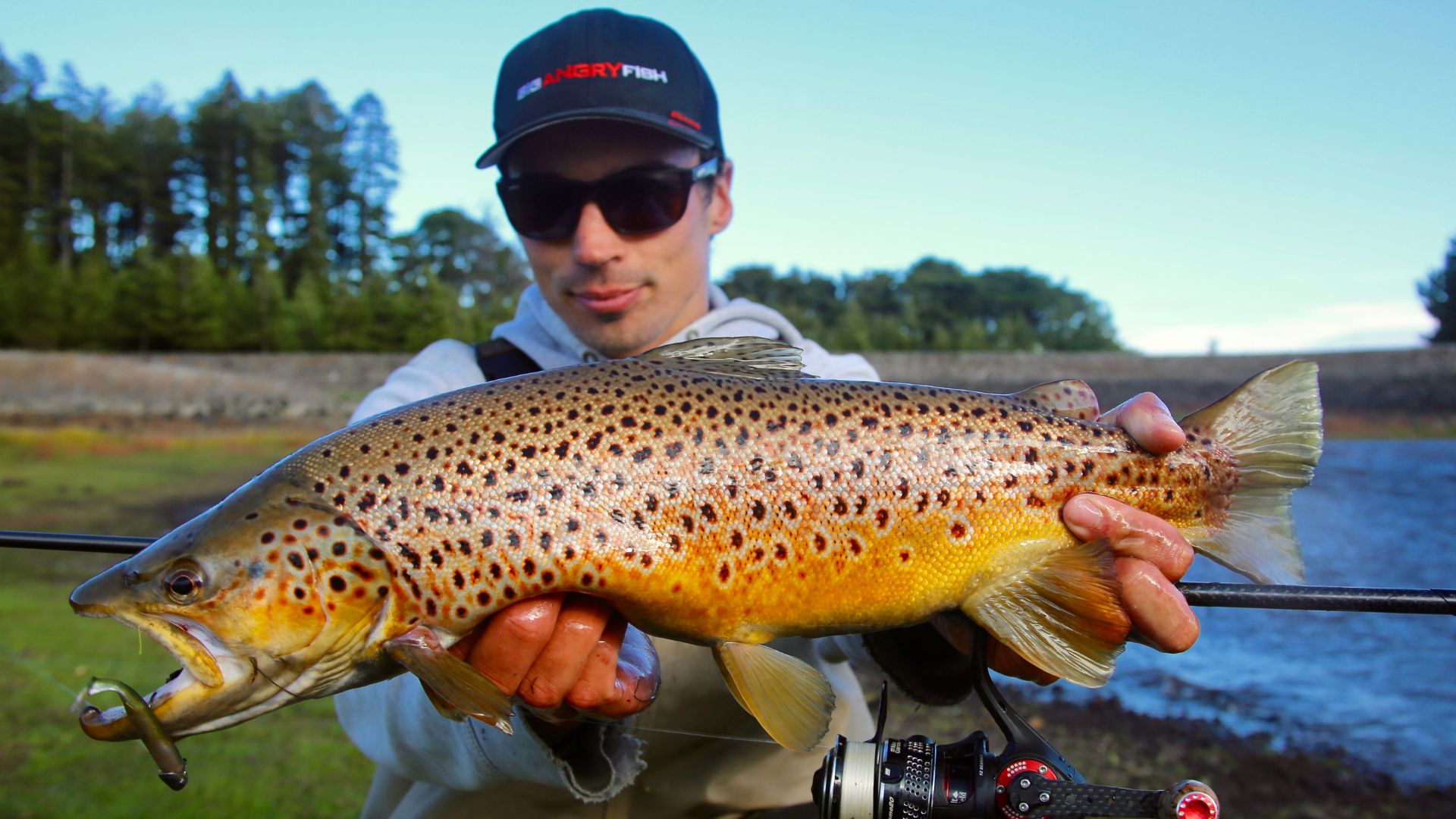
Fishing for Trout has got to be one of the most quintessential freshwater fishing experiences an angler can have. The Brown Trout in particular has been a coveted quarry across the UK and Europe for thousands of years and it's easy after a feed. Trout aren't native to Australia but they've been populating many of our southern freshwater waterways for over 150 years. It was back in April 1864 when the good ship Norfolk arrived from England carrying the first Trout ova to ever grace our shores.
In May of that year, those Brown Trout were hatched in Tasmania's Plenty River and became the founding population for many fisheries across Australia. Nowadays we have many waterways across the southern states with healthy populations of Brown, Brook and Rainbow Trout, with regular stocking programs to bolster stock levels in rivers and lakes predominantly across VIC, NSW and Tasmania.
Quick Links
- Trout Fishing In Australia FAQs
- Trout Fishing Styles
- Reading The River
- How To Cast When Trout Fishing
- Spinning For Trout
- Fly Fishing For Trout
- When To Go Trout Fishing In Australia
- Where To Go Trout Fishing In Australia
Trout Fishing In Australia FAQs
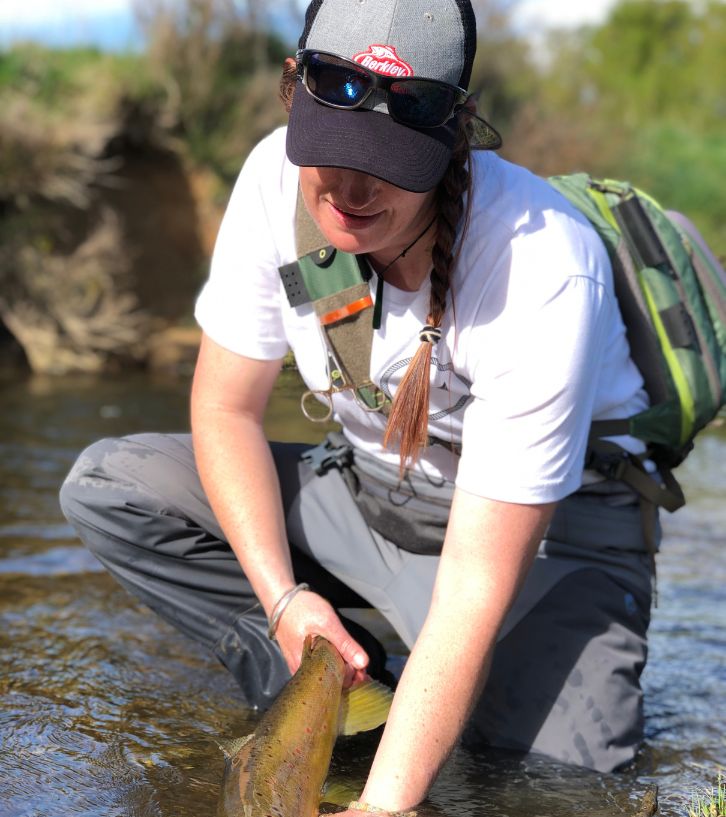
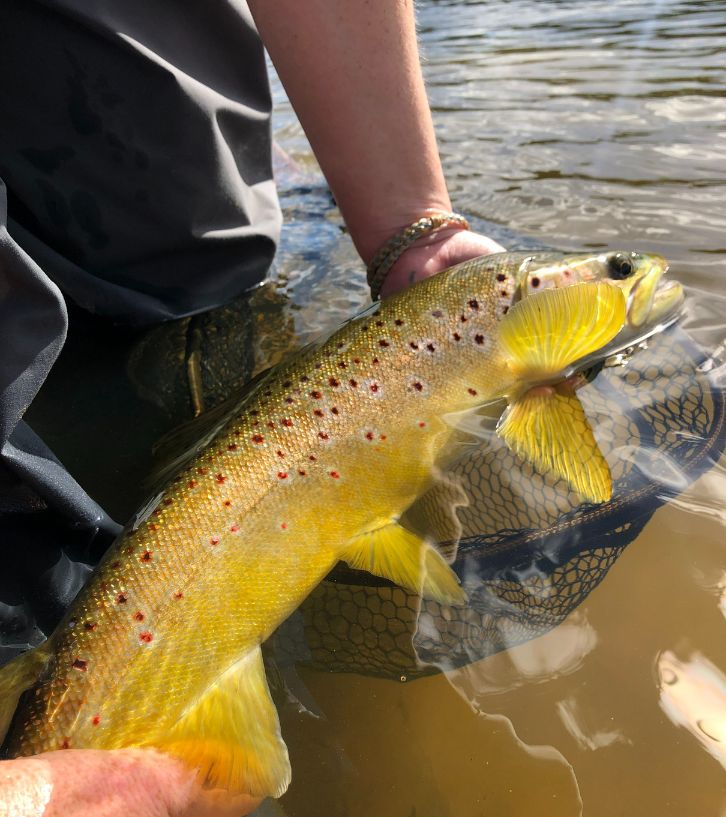
What is the best bait for Trout?
When it comes to choosing the best bait for Trout, your best bet is going to be bait such as wattle grubs, grasshoppers, cockroaches, crickets, mudeyes and even common garden worms. You must also check the Trout fishing guidelines in your area as some will have certain restrictions such as not using fish or frogs as Trout bait.
What time of day is best for Trout fishing?
It can depend on where you are Trout fishing, but as a general rule, the best time of day to catch Trout is during the early hours of the morning, roughly from dawn to about two hours after sunrise. If you can't get down that early, then late afternoon, roughly three hours before sunset is your next best option.
What weight sinker for Trout?
The correct weight of sinker when fishing for Trout in Australia is going to be determined by the specific depth of the water you are Trout fishing in combined with the amount of drift by the wind. The common rule of thumb is:
- 10 to 20m deep with no/little wind: 1oz (29g)
- 15 to 25m deep with little wind: 1.5oz (42g)
- 20 to 35m with some wind: 2oz (56g)
What size hook to use for Trout?
When determining the best size of hook for catching Trout, you will want to aim between a size 8 and a size 14 fishing hook. This is because Trout live in clear waters and have really good eyesight, so fishing with a smaller hook will give you a better chance of the Trout not noticing the hook in the water when you are fishing.
What colour fly is best for Trout fishing?
The best colour of fly for Trout fishing will depend on the conditions of the water you are fishing for Trout in. Light colours such as yellow and gold are perfect for reflecting light in sunny weather with clear water. Dark colours like olive and brown are better for fishing in murky waters during overcast weather.
Trout Fishing Styles
Depending on your preference and level of experience, Trout can be targeted with a range of fishing styles, the most popular being bait fishing or spinning with lures. Whichever option you choose, it always pays to remember that Trout are finicky fish and are easily spooked. Moving around quietly, especially in smaller bodies of water will up your chances of bagging your quarry. A landing net is a must-have. When catching Trout, always remember that Trout are very slippery because they have a slime membrane that covers their skin. This not only makes them hard to hold onto but it's extremely important for the fish's health. For this reason, always minimise the time you have the fish out of the water and if you have to handle it, make sure your hands are wet (dry hands will strip the slime layer off the fish).
Reading The River
As with any kind of fishing, your chances of catching a fish will be severely reduced if you don't know where they're holding and this is particularly true for Trout. Learning to read a river will not only improve your chances of catching a Trout, but it's an absolute necessity when it comes to how to catch a Trout. Reading a river is a skill that takes time to hone. You need to spend time on the water and learn as you go. But that said, there are a few things to look for that will get you off to a running start. Trout like to have shelter, a steady stream of food drifting by and conserve energy whenever possible. So look for places within the river or stream that will provide Trout with these three things, like fallen trees or branches and transitions from shallow to deeper water. A great way to get your river reading skills up to scratch is to go on a Trout fishing charter. This will set you up for success when it's time to head out on your own.
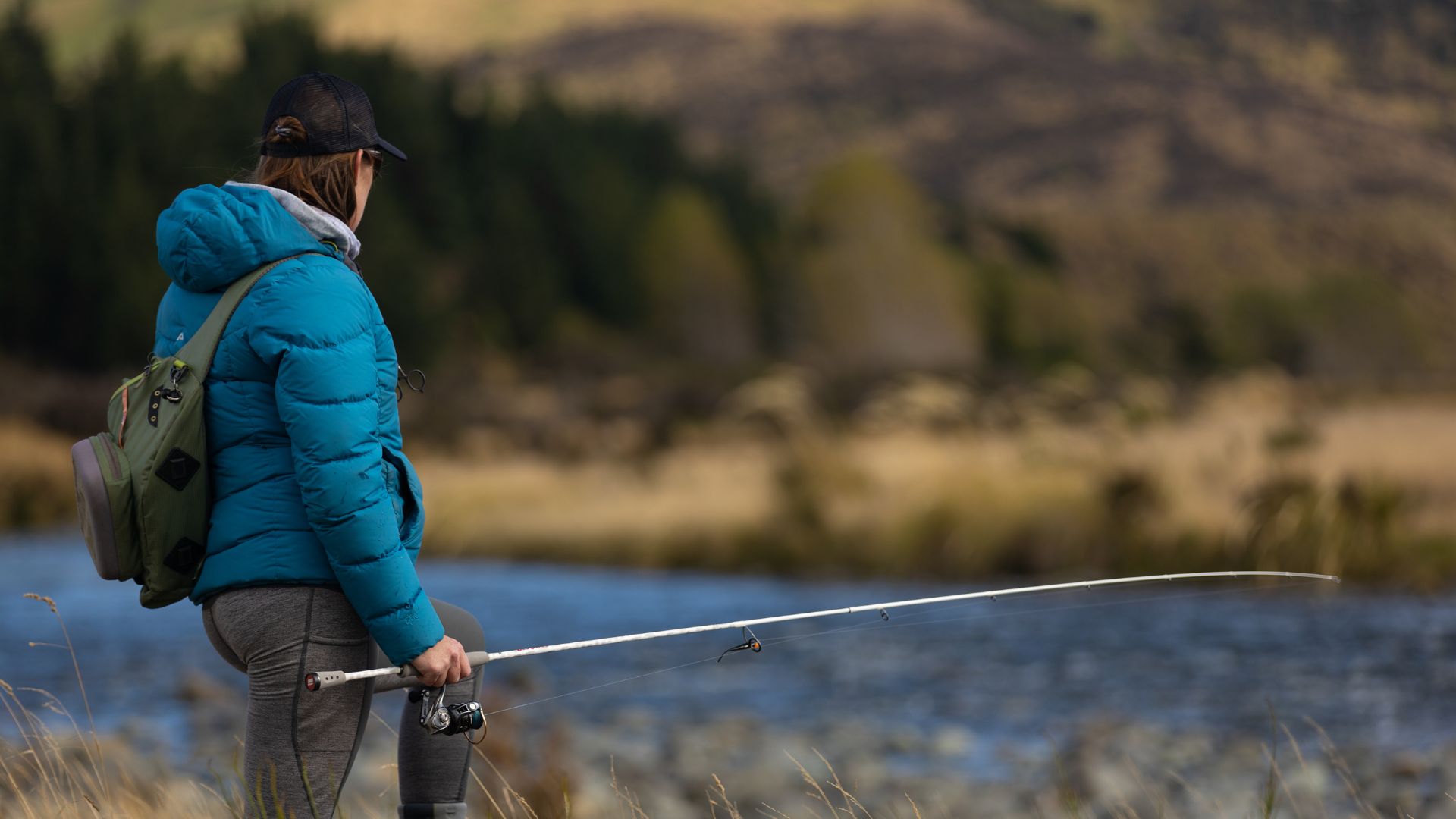
Whether you're spinning, bait fishing or fly fishing, it's important to cover the body of water you're fishing. To do this effectively, you need to decide on your starting point and your endpoint and make sure you cover the river one section at a time. When lure or fly fishing for Trout, it's always best to start downstream and work your way upwards towards the top of a pool or run. This is because Trout face into the current, looking upstream for passing food sources and will better react to a lure presented naturally in the current.
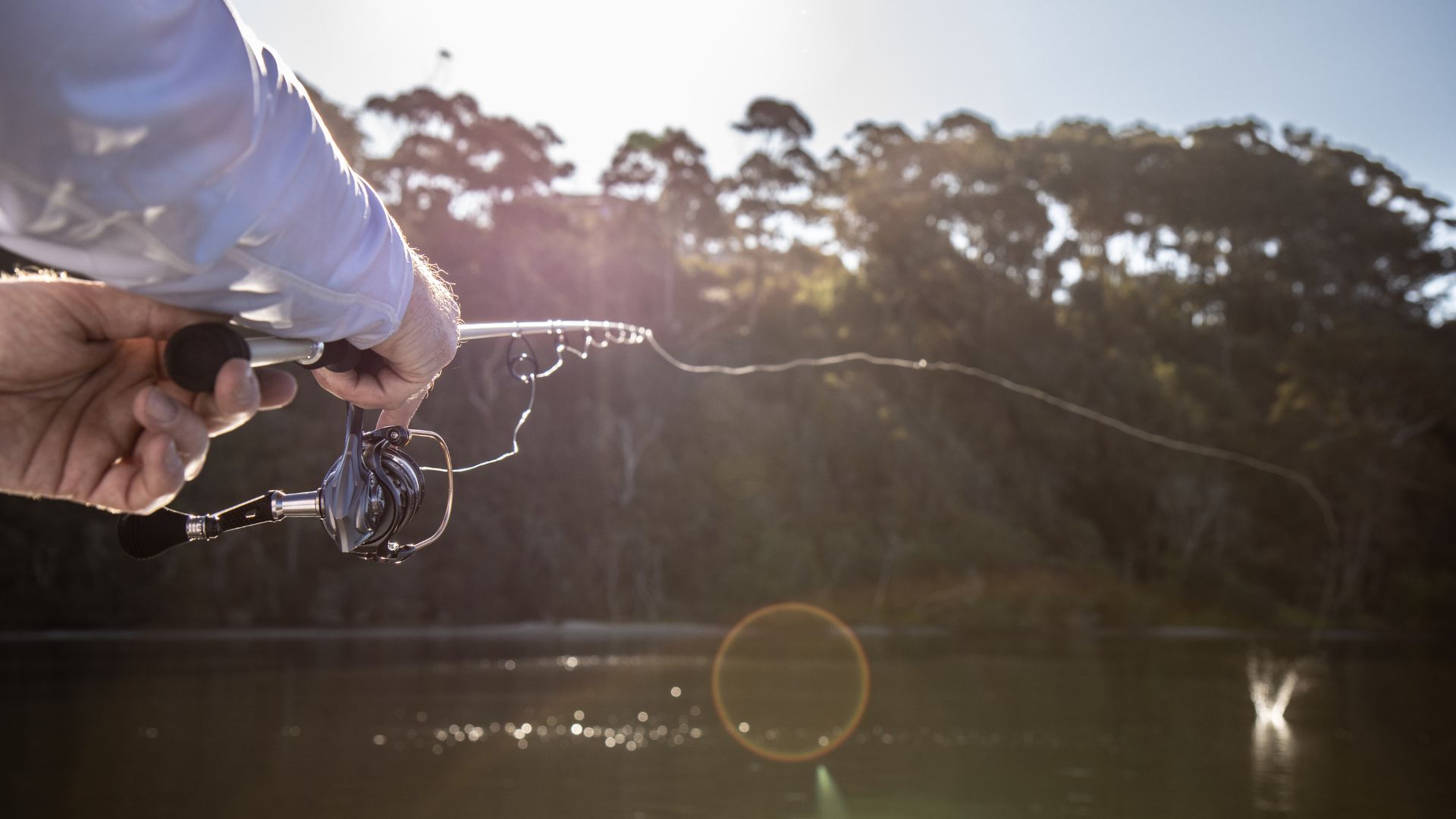
Now we'll discuss the best bait for Trout. If you're going spinning for Trout, you'll want to keep your outfit light. Line wise, 4 to 6lb monofilament or braid for the mainline, matched with a 6 - 8lb fluorocarbon leader on is a great start. A 1000 to 3000 size spinning reel (check to make sure the reel capacity matches up with the line you're planning to use) paired with a 6.6/7ft spinning rod is a good all-round combo. Then you need to decide whether you'll be using bait or lures.
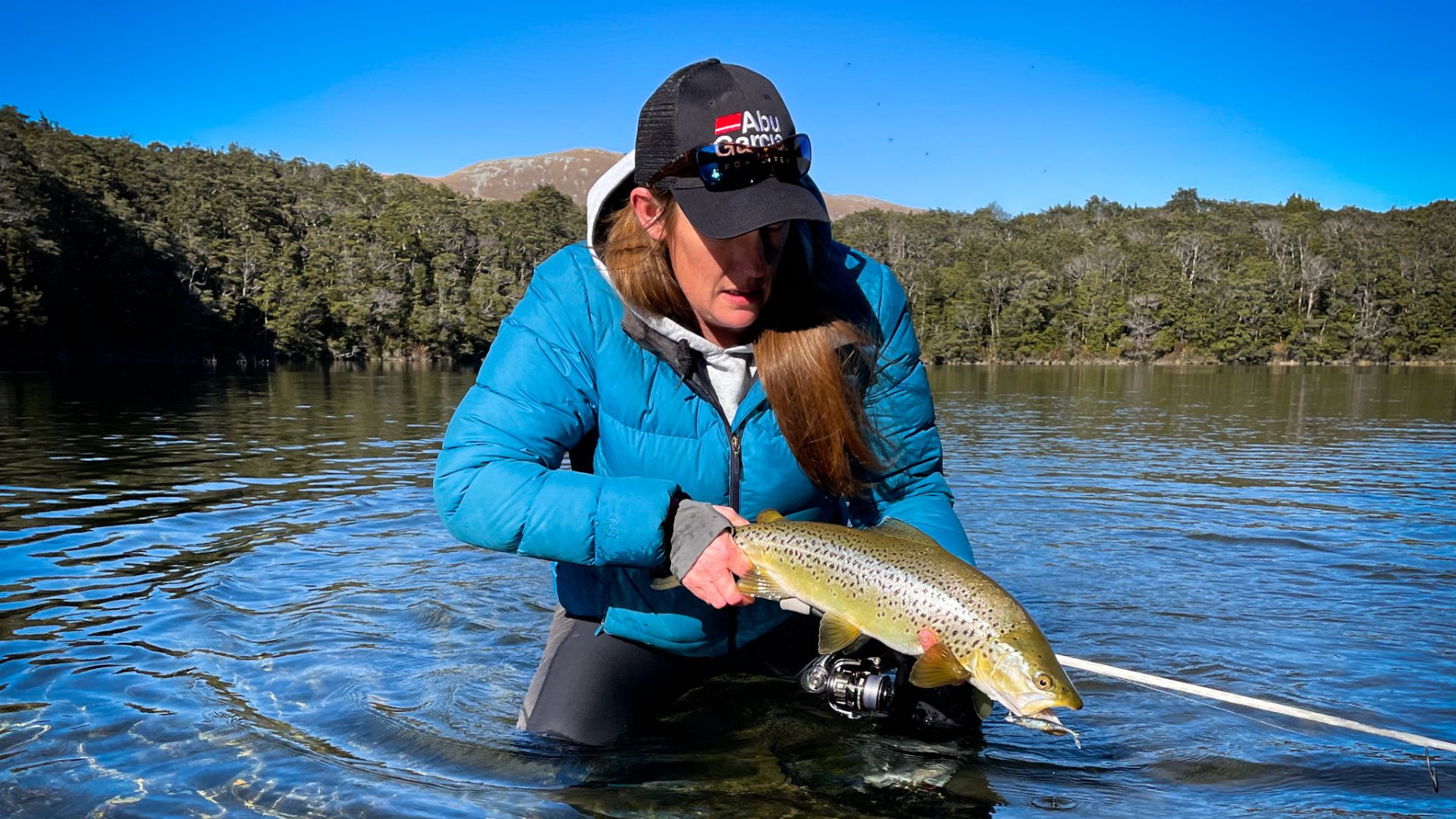
Bait
If you plan on using bait, options like worms, mudeyes, crickets and grasshoppers are awesome options for the best bait for Trout. Then there are artificial baits like the excellent powerbait range from Berkley that includes Trout nuggets, generic Trout bait and dough. These often work particularly well on stocked Trout populations as they're often fed this sort of thing in hatcheries.
Lures
There are literally hundreds of hard body and soft plastic lures made for Trout and the best one for you will depend on where and when you're fishing. Targeting Trout with a light spinning combo and inline spinners is one of the most tried and tested methods for catching Trout. That said, the old faithful Tasmanian Devil and Mepps spinners are hard to pass up, along with hardbody lures in the 50mm to 75mm size.
Fly Fishing For Trout
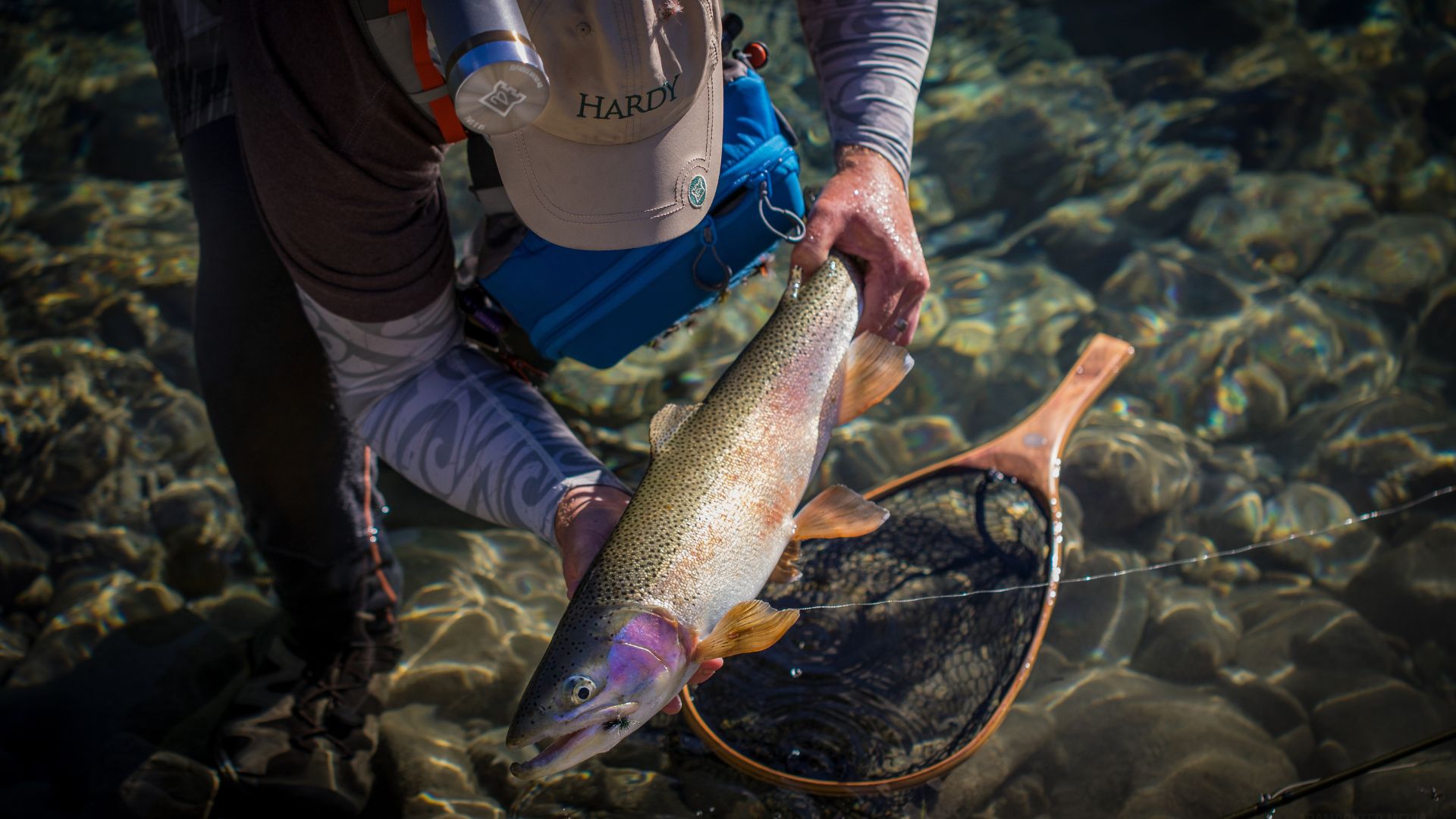
Fly fishing really takes the angling experience up a notch. But for the uninitiated, it can be a steep learning curve and incredibly frustrating. If you're willing to persevere though, it won't take you all that long to build up enough know-how to get out on the water and start catching fish. Instead of bait or lures, fly fishers (unsurprisingly) use flies. These are designed to be lightweight and mimic the size, shape and behaviour of the insects Trout are feeding on. Because flies have no weight to them, the flyfisher has to use the weight of the fly line to cast - this is what takes some practice. A great way to get a good head start with your fly-fishing skills is to go on a guided fly-fishing tour. These usually run for half a day or a full day and will set you up with the necessary knowledge and skills to start catching Trout on the fly.
When To Go Trout Fishing In Australia
Trout season varies from state to state and year to year so it's always good to check local regulations before heading out. Closed season is when the Trout are spawning so make sure you're aware of the relevant dates for your state as this downtime gives the Trout a chance to repopulate and ensure our fisheries stay healthy for years to come. If you are wanting to drop a line in over the closed season, head to a lake or impoundment as these are open to Trout fishing all year round - just make sure you've got a current fishing license for whatever state you're fishing in. The best time of year to try and bag a Trout varies on a lot of factors and it's worth trying your luck across the entire open season. That said, spring can often see Trout on the bite as waters warm up and food becomes more abundant after the winter cold. Trout also become more active when temperatures are rising, which is another reason spring tends to deliver results.
Where To Go Trout Fishing In Australia
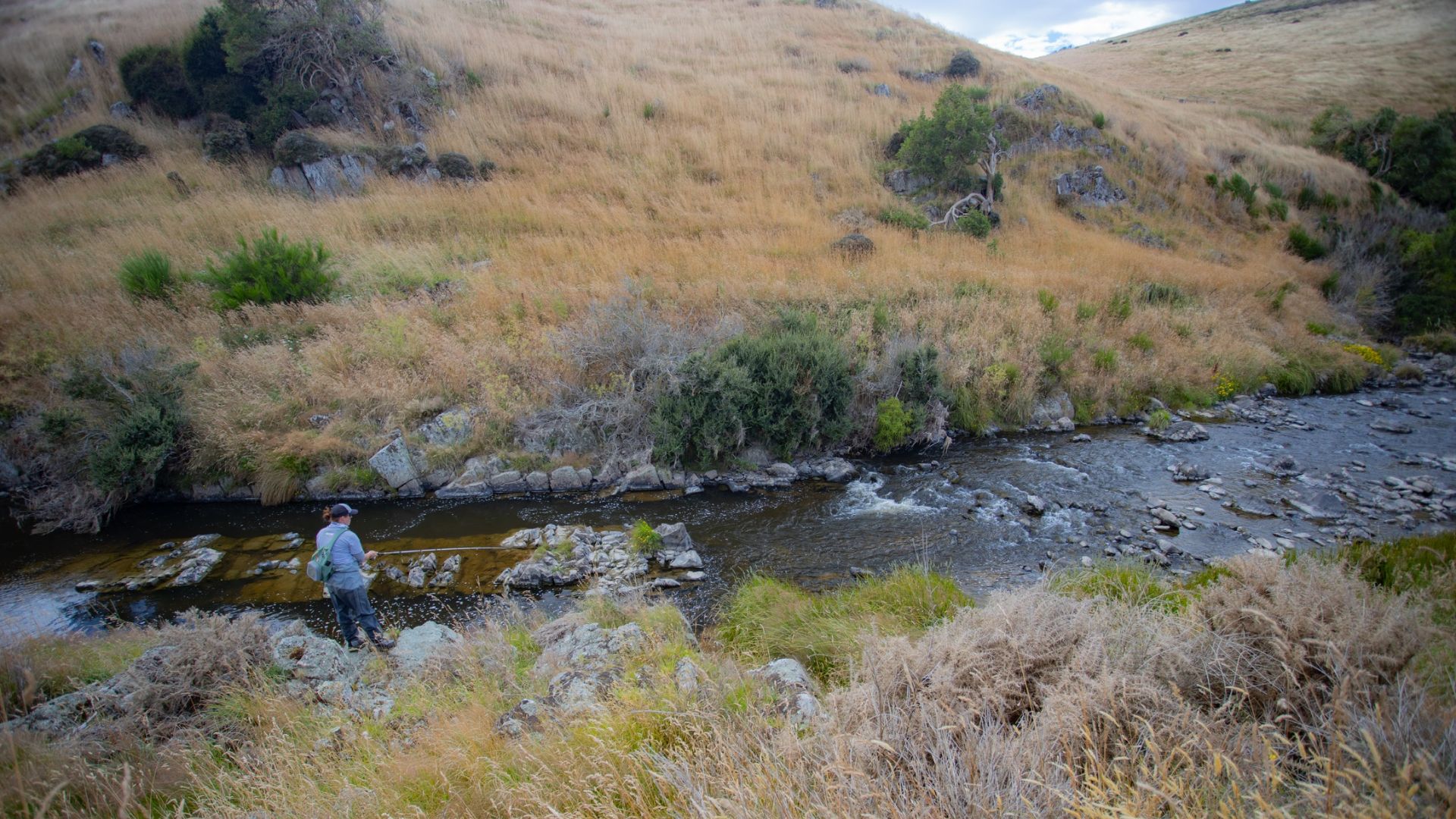
Australia's southern states have both wild and stocked populations of Brown and Rainbow Trout as well as some Brook Trout. While Trout waters vary substantially, generally speaking high altitude, fast-flowing streams and rivers are a good bet for wild Trout, while many lakes are regularly stocked. Here's a closer look at what's on offer in each state.
Trout Fishing New South Wales
In NSW, the Snowy Mountains and Monaro regions hold the majority of Trout fisheries and the area is highly regarded. Thredbo River, Lake Eucumbene, the Upper Murrumbidgee River and Lake Jindabyne for example are renowned for being both picturesque and providing some world-class fishing opportunities. Closer to Sydney the Blue Mountains provide some fantastic Trout fishing lakes and rivers including a significant winter fishery for Rainbow Trout in the tributaries of Warragamba Dam. The Oberon district on the western side of the Blue Mountains is also highly regarded. The Department of Primary Industries has put together in-depth guides for southern, central and northern waters which are worth a look if you're not sure where to go.
Trout Fishing Victoria
Trout can be found in lakes and rivers across Victoria. The state supports wild populations in many of its rivers while a robust stocking program sees lakes across the state boating decent fishing too. Some great places to start are Lake Purrumbete & Lake Bullen Merri, as well as Lake Eildon and its feeder and tailrace waterways (Goulburn River, Jamieson River, etc.). Trout need cool, clean, well-oxygenated water to thrive, head to water at higher altitudes during summer (waters across the Victorian high country are some of the best in the country), or target rivers in forested areas that offer plenty of shade and offer good flows and depths. Check out the Victorian Fishing Authority website for a full breakdown.
Trout Fishing South Australia
While perhaps not as abundant as its neighbouring states, old SA does manage to maintain a Trout fishery with decent numbers of Brown and Rainbow Trout in a selection of small streams and reservoirs. Rainbow Trout populations are only sustained through stocking programs but there are wild populations of Brown Trout in some creeks. More information can be found on reservoirs and reserves on the SA Government website.
Trout Fishing Western Australia
A large amount of Trout in WA waterways and streams are stocked fish, and the status of Trout waters is determined by recent stocking programs. The WA DPI website has a wealth of information on stocked waters, bag limits and licensing. Rainbow Trout, as well as Brown Trout, can be found in the far north and many rivers in the southwest are also worth exploring. Some of the most productive Trout waters in WA include Big Brook Dam, Blackwood River, Donnelly River, Glen Mervyn Dam, Logue Brook Dam, Murray River, Warren River and Wellington Dam.
Trout Fishing Tasmania
Australia's oldest and arguably best Trout fisheries can be found in Tassie's cold clear streams. Nearly all freshwater rivers, streams and lakes hold Trout in Tasmania and the state is regarded by many as the Holy Grail of Australian Trout fishing. For information on individual waters, licensing and bag limits, the Tassie government's Trout Fish Tasmania is an excellent resource, as well as our Ultimate Guide To Trout Fishing In Tasmania for everything you need to know.
Try These Awesome Tips For Trout Fishing In Australia Today
If you love the outdoors, Trout fishing provides a great alternative to saltwater angling. Many of the waters that hold Trout also happen to be naturally beautiful which makes fishing a pleasure no matter how many you catch. Trout fishing can be difficult to master at times but with a little perseverance, you're guaranteed some of the best fishing you'll ever experience. Just get out there and give it a go - you won't regret it.
Try out these awesome tips for Trout fishing in Australia today for the perfect way to escape with the family for a fun weekend. Before you head out though, make sure you are fully stocked up on all your fishing gear needs such as fishing line, fishing rods, fishing reels and much more. Make sure you check out our Adventure Centre for more awesome and helpful fishing tips such as:
- Top 10 Lures For Catching Trout
- Ultimate Guide To Trout Fishing In Tasmania
- How To Catch A MONSTER Murray Cod
- How To Modify Lures
Find your local Anaconda store and check out our extensive range of fishing gear to get you ready for your next squid fishing trip.